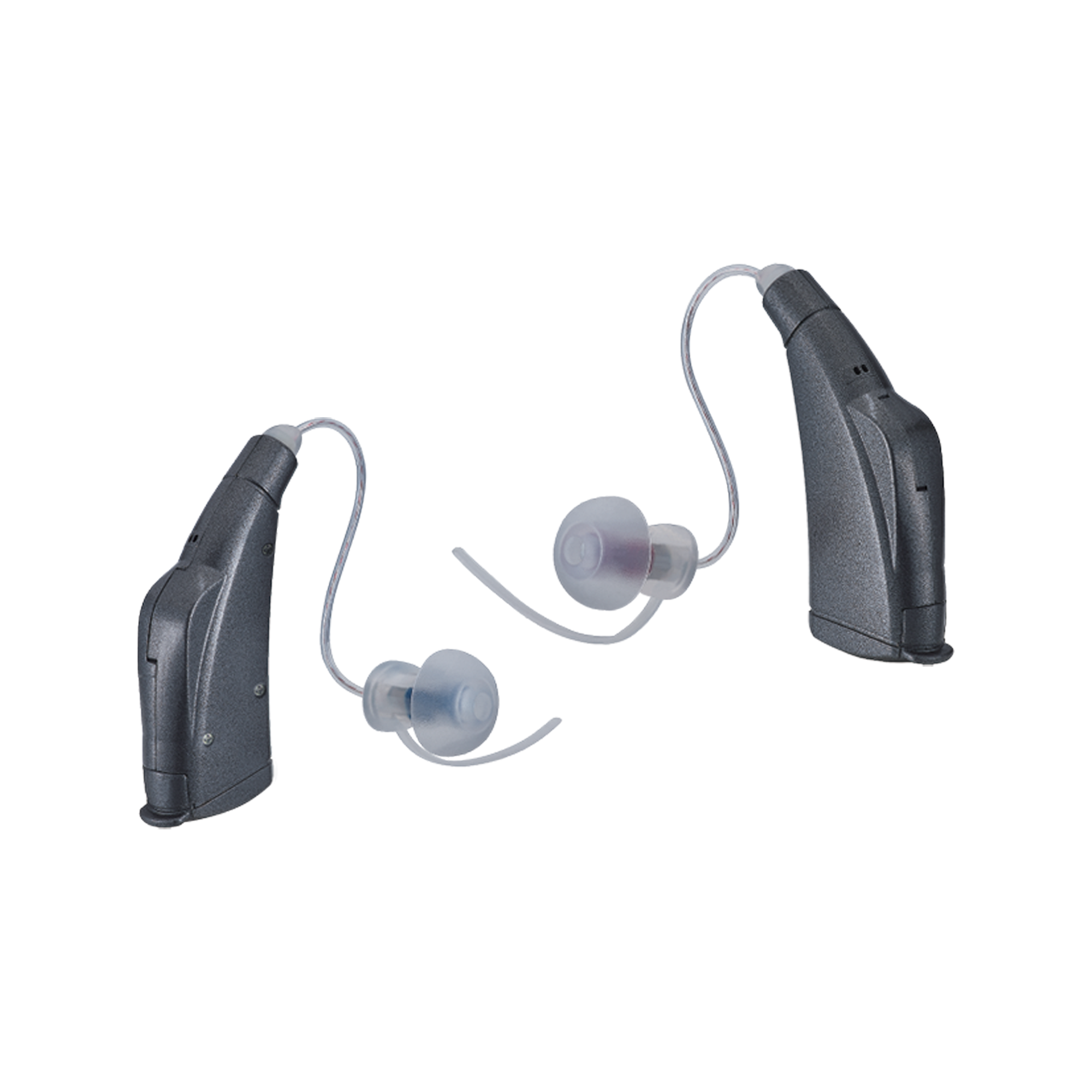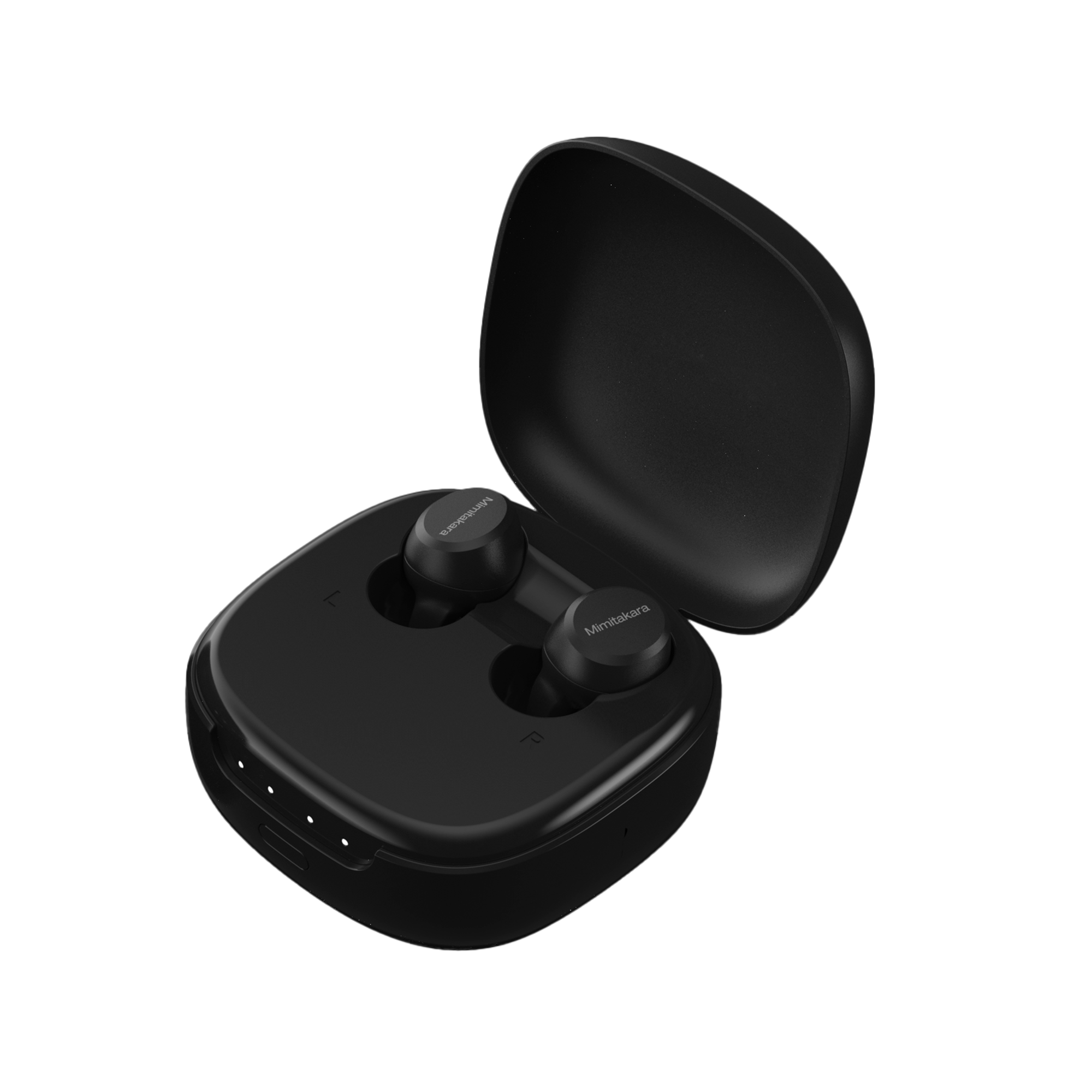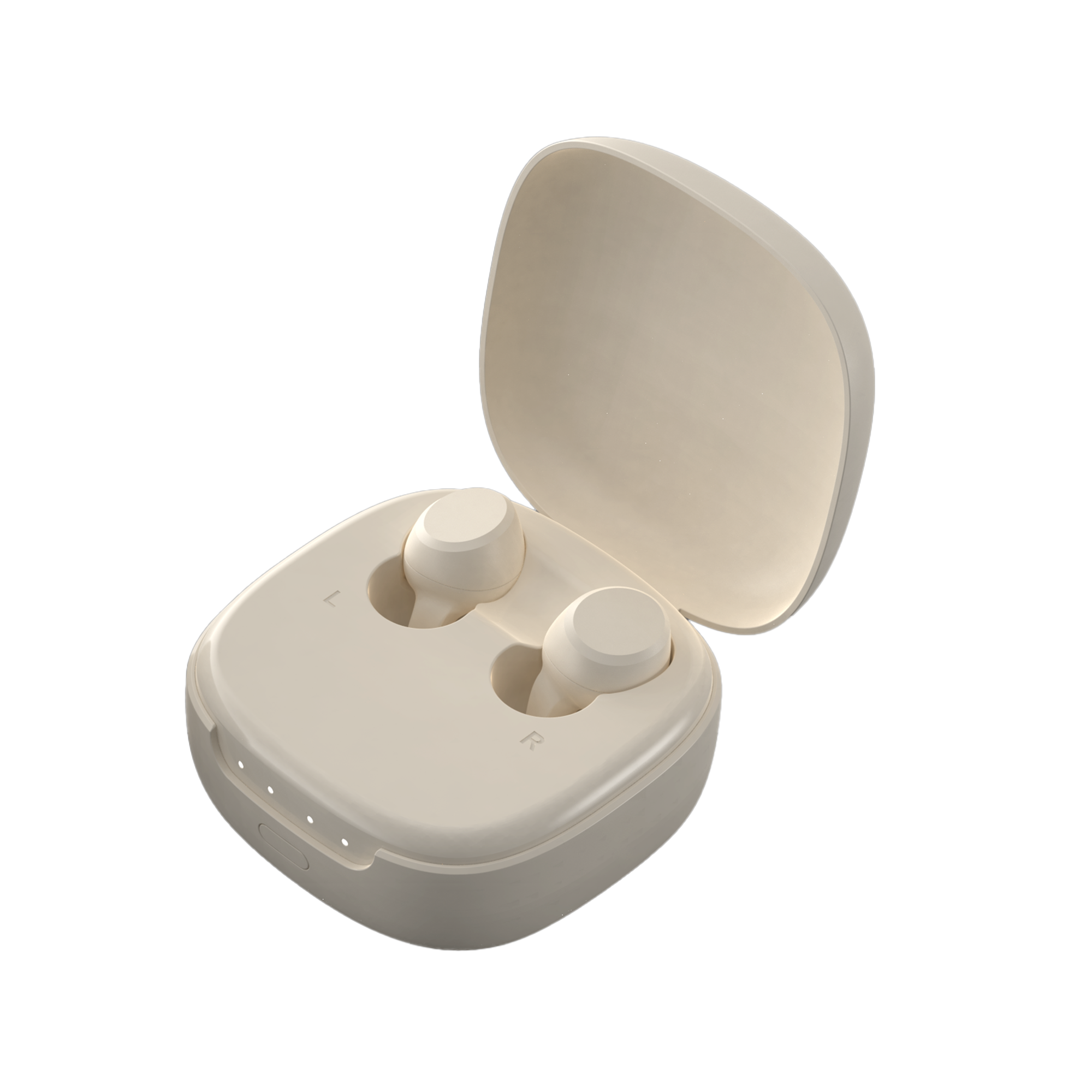Many individuals experience difficulty inserting their ITC hearing aids, which can lead to discomfort and even hinder the device’s performance. Our comprehensive guide offers clear instructions to ease the insertion process and improve your overall experience. We discuss the importance of positioning, handling, and maintaining ITC hearing aids with practical tips to ensure a snug, comfortable fit. Avoid common mistakes like improper positioning or using the battery door as a handle. Embrace these techniques to enhance your hearing aid usage effectively.
Understanding ITC Hearing Aids
ITC hearing aids are custom-made devices designed to fit snugly within the ear canal, offering a discreet and comfortable solution for individuals with mild to moderate hearing loss. These hearing aids are less visible than larger styles, such as behind-the-ear (BTE) or in-the-ear (ITE) devices, making them an appealing choice for those who prioritize discretion.
What are ITC Hearing Aids?
ITC hearing aids are custom-fit devices that sit in the outer portion of the ear canal. They are slightly larger than completely-in-canal (CIC) and invisible-in-canal (IIC) devices, allowing for additional features and controls. The custom fit ensures a comfortable and secure placement within the ear canal, reducing the risk of feedback and improving sound quality.
Benefits of ITC Hearing Aids
- Discretion: ITC hearing aids are less noticeable than larger styles, as they are designed to nestle within the ear canal. This makes them an excellent choice for individuals who are self-conscious about wearing hearing aids.
- Comfort: The custom fit of ITC hearing aids ensures a comfortable and secure placement within the ear canal, reducing the risk of the device falling out or causing discomfort.
- Enhanced features: Due to their slightly larger size compared to CIC and IIC devices, ITC hearing aids can accommodate additional features, such as volume controls and memory settings, which may not be available in smaller devices.
- Improved sound quality: ITC hearing aids often feature dual microphones, which enhance sound clarity and improve the user's ability to understand speech in various tones and pitches.
- Compatibility with phones: Many ITC hearing aids are compatible with telephones and smartphones, allowing users to connect their devices wirelessly for clearer phone conversations.
- Ease of use: Some ITC hearing aids come with an optional extraction cord, making it easier for individuals with limited dexterity to remove and insert the device.
While ITC hearing aids offer numerous benefits, it is essential to note that they may not be suitable for everyone. Individuals with more severe hearing loss or those prone to recurrent ear infections may require alternative hearing aid styles. Additionally, the small size of ITC devices can make them more challenging to handle and maintain, particularly for those with dexterity issues.
Preparing for Insertion
Before inserting your ITC hearing aids, it is essential to prepare properly to ensure a smooth and hygienic process. Gathering the necessary materials and maintaining cleanliness are key steps in this preparation phase.
Gathering Materials
To insert your ITC hearing aids correctly, you will need the following items:
- Your ITC hearing aids
- A clean, dry cloth or tissue
- A soft-bristled brush (often provided with your hearing aids)
- A wax pick or hook (if included with your hearing aids)
- A mirror (optional but helpful)
Having these materials on hand will make the insertion process more efficient and effective.
Ensuring Cleanliness
Maintaining cleanliness is crucial when handling your ITC hearing aids. Follow these steps to ensure proper hygiene:
- Wash your hands thoroughly with soap and water, and dry them completely before touching your hearing aids. This helps prevent the transfer of dirt, oil, and bacteria to your devices.
- Clean your ITC hearing aids daily using the provided brush or a clean, dry cloth. Gently remove any visible earwax or debris from the surface of the devices, paying special attention to the sound outlet and microphone openings.
- If your hearing aids have wax guards or filters, check them regularly and replace them as needed. This helps prevent wax buildup and ensures optimal sound quality.
- Avoid using water, solvents, or alcohol to clean your ITC hearing aids, as these can damage the delicate electronic components.
By gathering the necessary materials and maintaining proper hygiene, you can ensure that your ITC hearing aids are ready for insertion and will function optimally.
Step-by-Step Guide to Inserting ITC Hearing Aids
Now that you have prepared your ITC hearing aids and ensured cleanliness, it's time to insert them correctly. Follow these step-by-step instructions for a comfortable and secure fit.
Step 1: Positioning the Hearing Aid
- Hold the ITC hearing aid between your thumb and index finger, with the battery compartment facing outward.
- Identify the top and bottom of the device. Most models have a colored dot or other marking indicating the top.
- Position the hearing aid at the entrance of your ear canal, with the top portion facing upward.
Correct PositioningIncorrect PositioningBattery compartment facing outwardBattery compartment facing inwardTop portion facing upwardTop portion facing downward
Step 2: Gently Tugging the Ear
- Using your free hand, reach over your head and gently pull your earlobe downward and slightly backward. This action helps straighten the ear canal, making insertion easier.
- While maintaining a gentle pull on your earlobe, use your other hand to guide the ITC hearing aid into your ear canal.
- Apply light pressure and use a slight twisting motion to help the device slide into place. The hearing aid should fit snugly within your ear canal without causing discomfort.
Step 3: Final Adjustments
- Once the ITC hearing aid is inserted, use your index finger to gently press on the device to ensure it is securely in place.
- If your hearing aid has a removal string or handle, make sure it is positioned comfortably outside the ear canal.
- Take a moment to assess the fit and comfort of the device. If you experience any pain, discomfort, or the hearing aid feels loose, remove it and try reinserting using the steps above.
Remember, inserting your ITC hearing aids correctly is crucial for optimal performance and comfort. If you continue to experience difficulty or discomfort, consult your hearing care professional for further guidance and adjustments.
Common Mistakes to Avoid
When inserting your ITC hearing aids, it's crucial to avoid common mistakes that can lead to discomfort, poor sound quality, or even damage to the devices. Here are two key mistakes to be aware of:
1. Using Battery Door as a Handle
One of the most frequent errors made by ITC hearing aid users is utilizing the battery door as a handle for insertion or removal. This practice can be detrimental to the device, as the battery door is not designed to withstand such stress. Mishandling the battery door may cause it to become loose or even break off, compromising the hearing aid's functionality and requiring repairs.
To prevent this issue, always grasp the hearing aid by its body when inserting or removing it from your ear. Avoid applying any pressure or force to the battery door, as it should only be used for its intended purpose of accessing the battery compartment.
2. Incorrect Positioning
Proper positioning is essential for optimal performance and comfort when wearing ITC hearing aids. A common mistake is failing to insert the device deep enough into the ear canal, which can result in a loose fit, feedback (whistling), and reduced sound quality.
To ensure correct placement, follow these steps:
- Hold the ITC hearing aid between your thumb and index finger, with the battery compartment facing outward.
- Identify the top and bottom of the device, usually indicated by a colored dot or other marking.
- Gently pull your earlobe downward and slightly backward to straighten the ear canal.
- Guide the hearing aid into your ear canal, applying light pressure and using a slight twisting motion to help it slide into place.
Correct PositioningIncorrect PositioningDevice sits snugly within ear canalDevice is not inserted deep enoughTop portion faces upwardTop portion faces downward or sidewaysNo discomfort or feedbackLoose fit, discomfort, or feedback
By taking the time to properly position your ITC hearing aids and avoiding the use of the battery door as a handle, you can ensure a comfortable and effective listening experience while prolonging the life of your devices.
Tips for Ensuring a Snug Fit
Achieving a comfortable and secure fit is crucial for optimal performance and satisfaction with your ITC hearing aids. Here are some tips to ensure a snug fit:
- Schedule regular check-ups with your audiologist: Attend routine appointments to monitor any changes in your hearing and the fit of your hearing aidsYour audiologist can make necessary adjustments to maintain a proper fit and address any concerns.
- Use the correct size and style of hearing aids: ITC hearing aids are custom-made to fit your unique ear shape and sizeYour audiologist will take precise measurements and create a mold of your ear canal to ensure a perfect fitChoosing the right size and style based on your hearing loss and lifestyle needs is essential for comfort and effectiveness

- Maintain good hygiene: Clean your ITC hearing aids daily to remove earwax and debris that can affect the fit and performanceUse a soft, dry cloth or the provided cleaning tools to gently wipe the surface and openings of the devicesAvoid exposing your hearing aids to moisture, as this can lead to damage and a poor fit.
- Be patient and consistent: It may take some time to adjust to the feel of your new ITC hearing aidsWear them regularly as directed by your audiologist to help your ears adapt to the fit and sensationIf you experience persistent discomfort or difficulty with the fit, contact your audiologist for further guidance and adjustments
By following these tips and working closely with your audiologist, you can ensure a snug and comfortable fit with your ITC hearing aids, allowing you to enjoy the benefits of improved hearing and communication.
Troubleshooting Common Issues
Despite carefully following the instructions for inserting your ITC hearing aids, you may still encounter some issues. Here are some common problems and how to address them:
Dealing with Discomfort
If you experience discomfort or pain while wearing your ITC hearing aids, consider the following:
- Check that you have properly inserted the hearing aid into your ear canal. Improper placement can cause irritation or soreness.
- Examine your ear canal for any wax buildup, as this can lead to discomfort. If necessary, have your ears cleaned by a professional.
- If the discomfort persists, contact your audiologist for further adjustments or modifications to the hearing aid shell.

Handling Feedback or Whistling
Feedback, or whistling, can occur when the amplified sound from your ITC hearing aid escapes the ear canal and re-enters the device's microphone. To minimize this issue:
- Ensure that your hearing aid is seated properly within your ear canal. A loose fit can allow sound to escape and cause feedback.
- Check the volume settings on your hearing aid. If the volume is too high, it can lead to feedback. Adjust the volume to a comfortable level.
- If you have excessive earwax, it can block the sound from entering your ear canal, causing it to bounce back into the hearing aid. Regularly clean your ears and hearing aids to prevent wax buildup.
- In some cases, feedback may indicate a problem with the hearing aid itself. If the issue persists, consult your audiologist for further evaluation and possible repairs or adjustments.
By addressing these common issues promptly, you can ensure a comfortable and effective experience with your ITC hearing aids. Remember, your audiologist is always available to provide guidance and support throughout your hearing journey.
Conclusion
Inserting your ITC hearing aids correctly is essential for achieving optimal comfort, sound quality, and device longevity. By understanding your hearing aids, preparing properly, and following the step-by-step insertion guide, you can ensure a secure and comfortable fit. Remember to avoid common mistakes, such as using the battery door as a handle or positioning the device incorrectly, as these can lead to discomfort and potential damage.
If you encounter any issues, such as discomfort or feedback, don't hesitate to troubleshoot using the provided tips or seek guidance from your audiologist. With patience, practice, and proper care, you'll be able to confidently and comfortably wear your ITC hearing aids, enjoying the many benefits they provide in your daily life.
FAQ
How do I properly insert an ITC hearing aid? To correctly insert an ITC (In the Canal) hearing aid, gently position the device into your ear canal, ensuring it sits comfortably and securely. It's important to follow any specific instructions provided with your hearing aid for the best fit and performance.
What challenges do ITC hearing aids present? The main challenges with ITC hearing aids include their small size, which can make them difficult to clean and maintain. This size also complicates battery changes, as the process can be quite intricate. These factors make ITC hearing aids less suitable for individuals who have difficulty handling small objects.










